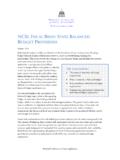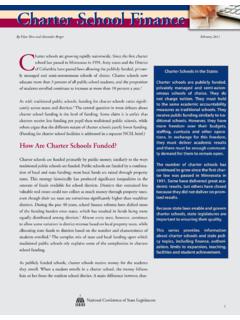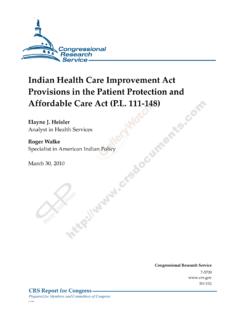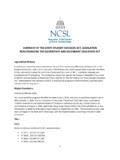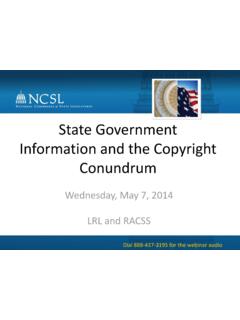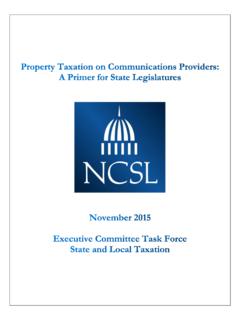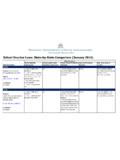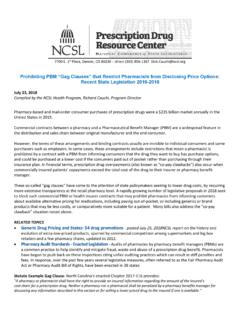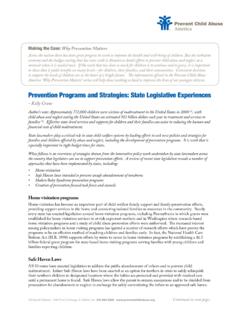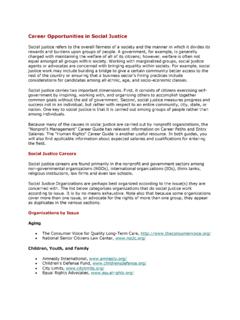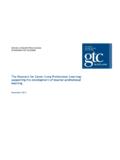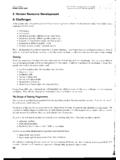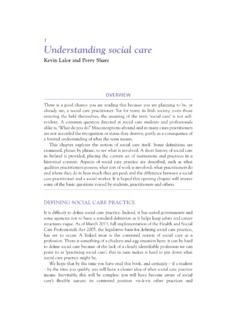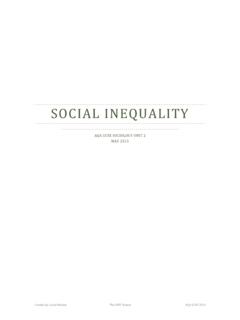Transcription of Delinquency Prevention & Intervention
1 Delinquency Prevention & InterventionDelinquency Prevention & InterventionJuvenile justice Guide Book for LegislatorsIntroductionEngaging in delinquent behavior can lead to drug use and dependency, dropping out of school, incarceration, adult criminal behavior and injury. Early Intervention and Prevention of delinquent behavior can divert juveniles from the adverse consequences that can result from and Protective Factors There are identified risk factors that increase a juvenile s likelihood to engage in delinquent behavior, although there is no single risk factor that is determinative. To counteract these risk factors, protective factors have also been identified to minimize a juvenile s likelihood to engage in delinquent four areas of risk factors are: individual, family, peer, and school and community.
2 Individual risk factors include early antisocial behavior, poor cognitive development, hyperactivity and emotional factors, such as mental health challenges. Family risk factors include poverty, maltreatment, family violence, divorce, parental psychopathology, familial antisocial behaviors, teenage parenthood, single parent family and large family size. Peer factors of association with deviant peers and peer rejection are identified as risk factors. School and community risk factors include failure to bond to school, poor academic performance, low academic aspirations, neighborhood disadvantage, disorganized neighborhoods, concentration of delinquent peer groups, and access to weapons. Many of these risk factors overlap. In some cases existence of one risk factor contributes to existence of another or others.
3 Generally, protective factors such as positive school attendance, positive social orientation or the ability to discuss problems with parents are a buffer to minimize or moderate the effect of risk factors and their ability to bring about delinquent behavior. Protective factors seem to mitigate the influence of risk factors. Both risk and protective factors are discussed as part of Delinquency Prevention and Prevention & Intervention Risk FactorsIndividual risk factorsFamily risk factorsPeer risk factorsSchool and Community risk factors1234 There are four identified risk factors that increase a juvenile s likelihood to engage in delinquent , protective factors such as positive school attendance, positive social orientation or the ability to discuss problems with parents are a buffer to minimize or moderate the effect of risk factors and their ability to bring about delinquent behavior.
4 3 Juvenile justice Guide Book for Legislatorspercent, adult arrest by 27 percent and violent crime by 29 percent. Other studies have shown that violence begets more violence. One study showed that children who were victims of violence were 24 percent more likely to report engaging in violence. One-third of the victims of child abuse or neglect are likely to subject their own children to abuse. In cases of extreme exposure to violence, children may develop post-traumatic stress syndrome, which makes it more difficult to form appropriate relationships, cause an increased tolerance for violence and lead to difficulty learning new early child care and education provide the bases for healthy growth and development, which includes physical well-being and structured early learning and educational opportunities.
5 Nutrition, health care, parental involvement and interaction, and quality pre-school experiences also contribute. Positive early child care includes adequate staff qualifications and training, low staff-to-child ratios, adequate staff compensation and developmental the pre-teen years, the strongest risk factor for Delinquency is influence from a delinquent peer group. School Age The next crucial phase of Prevention and Intervention occurs during the pre-teen years. During Phases of Prevention and InterventionDelinquency Prevention and Intervention efforts primarily are comprised of identifying the risk factors that contribute to Delinquency , addressing those factors early, and building on protective factors to offset the risks. Although traditional Delinquency Prevention policies were targeted at school-age youth, more modern Delinquency Prevention and Intervention efforts focus on pre-birth into childhood and most recent research suggests that the earliest Prevention should begin in the womb and in the first years of a baby s life.
6 Pre-natal For instance, research on brain development shows that neural connections regulating responses to stress are formed in utero and into the first 33 months of life (as noted in the Adolescent Development and Competency section). A child who grows up in a chaotic or abusive environment is more likely to have an over-reactive flight-or-fight reflex. Furthermore, someone who cannot maintain self-control under stress has a greater inclination to Childhood Social research has shown a strong association between childhood abuse and neglect and delinquent behavior. A National Institute of justice study showed that a history of child abuse and neglect increased the likelihood of juvenile arrest by 59 Delinquency Prevention & Intervention4this time, the strongest risk factor for Delinquency is influence from a delinquent peer group.
7 Other prominent risk factors for school-age children are involvement of family members in crime, academic failure and disinterest in school, family violence, drug use, and gang influence and play a particularly important role during the school-age years. They provide a forum within which to promulgate programs and policies aligned with Delinquency Prevention and Intervention . These programs can address a range of topics, such as drug and alcohol use, bullying, and gang Prevention . In fact, most gang resistance programs are school-based. The school role also includes their discretion in disciplining and reporting juveniles, sometimes resulting in Delinquency this time, the strongest risk factor for Delinquency is influence from a delinquent peer Assessments Research shows the most effective interventions are those that target the right kids.
8 Research by the Peabody Research Institute (2010) shows, in general, that Intervention for high-risk delinquents, on average, more effectively reduces recidivism than when those interventions are applied to low-risk delinquents. Practically, juvenile justice systems will have more success in reducing recidivism if they focus interventions on higher-risk youth. The research further shows that therapeutic programs such as restorative programs, programs centered on skill building, and counseling were more effective than disciplinary or deterrence philosophies. It is important that the program type match the youth s by the Peabody Research Institute (2010) shows, in general, that Intervention for high-risk delinquents, on average, more effectively reduces recidivism than when those interventions are applied to low-risk delinquents.
9 Evidence-Based Programs Model Prevention evidence-based programs such as multi-systemic therapy (MST) and family functional therapy (FFT) have shown positive effects on recidivism. MST is a family systems approach designed to help parents deal effectively with their child s behavior problems. It is provided in the home, school and other community locations. FFT targets youth with substance abuse, Delinquency or violence in their home environment. It focuses on improving the function of the family by increasing problem-solving skills and emotional connections and providing appropriate parental structure for children in the home. Many states, including Pennsylvania, Florida and Washington, have implemented evidence-based programs. Research also has shown the effectiveness of smaller, local Juvenile justice Guide Book for Legislators5programs that follow principles similar to these successful with Status OffendersStatus offenses are non-criminal behaviors that constitute an offense only because the juveniles are minors.
10 The most common status offenses are truancy, curfew violations, running away and alcohol violations. Preventing and providing structured and appropriate services for status offenders are key to preventing future youth service experts recommend that status offenders benefit from assessment and early Intervention for family problems, as opposed to a disciplinary focus and adjudication. These providers advocate organized, early assessment by community centers in collaboration with local agencies. The community centers identify the needs of and provide the necessary services for the juveniles and their family members, if necessary to help prevent Delinquency . Status offenses are non-criminal behaviors that constitute an offense only because the juveniles are minors. TruancyTruancy is absence from school that is not excused by the school or a parent; some states provide a statutory age range within which students may be classified as truant.
